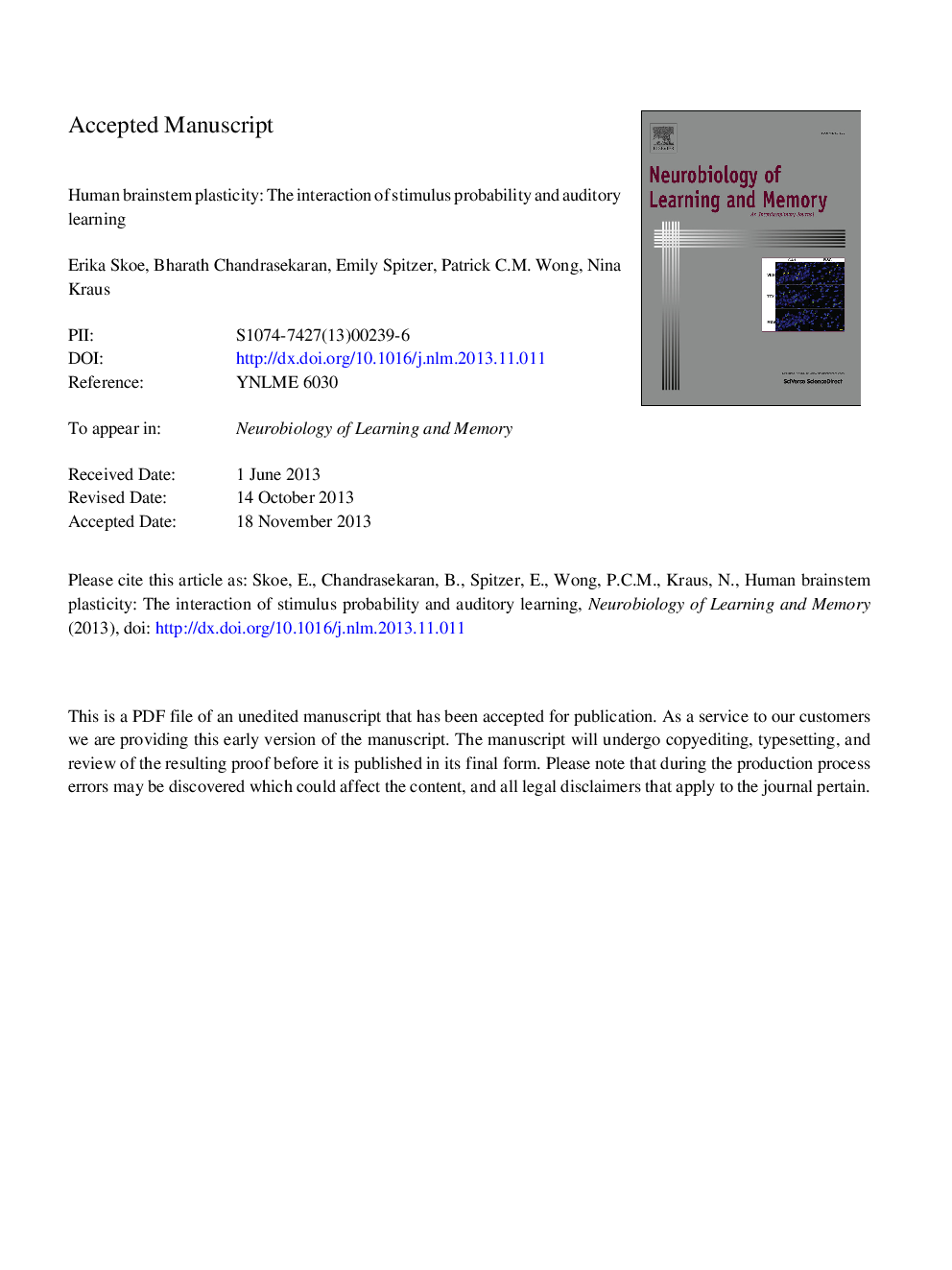| Article ID | Journal | Published Year | Pages | File Type |
|---|---|---|---|---|
| 7300416 | Neurobiology of Learning and Memory | 2014 | 42 Pages |
Abstract
Two forms of brainstem plasticity are known to occur: an immediate stimulus probability-based and learning-dependent plasticity. Whether these kinds of plasticity interact is unknown. We examined this question in a training experiment involving three phases: (1) an initial baseline measurement, (2) a 9-session training paradigm, and (3) a retest measurement. At the outset of the experiment, auditory brainstem responses (ABR) were recorded to two unfamiliar pitch patterns presented in an oddball paradigm. Then half the participants underwent sound-to-meaning training where they learned to match these pitch patterns to novel words, with the remaining participants serving as controls who received no auditory training. Nine days after the baseline measurement, the pitch patterns were re-presented to all participants using the same oddball paradigm. Analysis of the baseline recordings revealed an effect of probability: when a sound was presented infrequently, the pitch contour was represented less accurately in the ABR than when it was presented frequently. After training, pitch tracking was more accurate for infrequent sounds, particularly for the pitch pattern that was encoded more poorly pre-training. However, the control group was stable over the same interval. Our results provide evidence that probability-based and learning-dependent plasticity interact in the brainstem.
Keywords
Related Topics
Life Sciences
Neuroscience
Behavioral Neuroscience
Authors
Erika Skoe, Bharath Chandrasekaran, Emily R. Spitzer, Patrick C.M. Wong, Nina Kraus,
